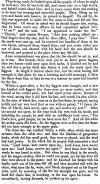|
Bishop John Hooper ( 1495-1555)

Born in Somerset in 1495 John Hooper
studied at Merton College, Oxford in 1515 and was tutored there by his
uncle, also John Hooper, and gained his Bachelor of Arts degree in 1518.
For some years after he joined with the Cistercian monks but eventually
returned to Oxford where he became enthused with Lutheranism through books
bought from Germany. His enthusiasm for Protestantism led Hooper into a
wandering lifestyle that saw him travelling on the continent, residing in
several English jails, and disputing with the papists through the reigns of
Henry VIiI, Edward VI, until his death in the reign of `Bloody Mary`
Tudor. He was probably one of the busiest clerics of his day and also one
of the stubbornest in defence of his beliefs, even unto burning at the
stake and martyrdom.
In 1539 and the introduction of the
Six Articles, he left Oxford and
for a while was chaplain to Sir Thomas Arundel, a catholic. They soon
parted company and he went to France. Returning to Somerset he stayed with
a gentleman by the name of Seintlow, but pursued by the papists he again
fled. This time he disguised himself as a sailor, hired a boat and sailed
to Ireland, then went to Holland and Switzerland. In Zurich he was warmly
received by Henry Bullinger who had taken over the chair at the university
from Zwingli (d 1531). Here Hooper`s ability in Greek and Hebrew was
greatly appreciated.
In 1547 the accession of Edward Vi
allowed Hooper to return to England and he began preaching in London on
reformed doctrines, including pluarlities. Although reputed to have a
sweetness of temper, Hooper also had a stubborn disapproval of
certain disciplinary issues (concerning dress) as a result of his stay in
Switzerland. In this he fell out with Cranmer and Ridley, and eventually
the King, Meanwhile he was appointed chaplain to the Duke of Somerset, the
Regent and Protector of Edward VI, who was also Hooper`s protector for a
while. In 1549 Hooper was one of the accusers of Bishop Bonner of London,
for which he would suffer retribution in Queen Mary`s reign. In 1550 he
preached before the king and was then made Bishop of Gloucester.
which brought to a head the differences concerning dress. Hooper
stubbornly refused to wear a rochet ( a white garment like a surplice,
with tight sleeves, worn under the chymer – a black satin robe worn by
bishops). Cranmer refused to give ground, even though Hooper had the
support of the Earl of Warwick and the King. Hooper then overstepped the
mark by publishing a confession of faith that criticised the Privy
Council. For this he was thrown into the Fleet prison. After eight months
Hooper was proceeded against and called to explain his objections to
conformity. An objectionable line in an oath of allegiance was struck out
by the king himself, and a compromise was achieved about wearing the
approved dress on certain public occasions. Accepting the compromise, Hooper
was then consecrated in his appointment as Bishop of Gloucester, 8 March
1551. The benefices of Gloucester See were relatively poor and in
May 1552, despite his stand on pluralities, Hooper accepted the Bishopric
of Worcester in commendam. Inevitably this raised the ire of the
papists, which did not prevent Hooper from diligently visiting and
preaching in both Sees. Shortly after the two sees were united in one, of
Worcester, to which he was formally translated.
On the death of Edward VI in 1553, Mary
Tudor succeeded to the throne and almost immediately sent for Hooper to
explain his accusations against Bonner and for taking the see of Worcester
that had been that of Bishop Heath (imprisoned under Edward VI). Hooper
was in no doubt of the danger he was in, but he refused to flee and
declared somewhat prophetically that he “would continue to live and die
with my sheep.” On 1 September he was committed again into the Fleet
prison, one of seven bishops to fall foul of the bigoted queen. Others
imprisoned at this time included Cranmer, Ridly, Latimer, Ferrars, and
Coverdale. The usual panoply of declamations, public condemnations and
demands to recant followed. Hooper and the other reformers stood firm,
while he corresponded with Bullinger and sent his wife and family abroad
for their safety.
The hatred of Bonner, Heath and Gardiner
was soon revealed in the proceedings against all the clerics held, and
they were variously disposed of – Cranmer, Latimer and Ridley to Oxford.
Hooper was a shuttlecock for a while with many appearances and re
appearances before the prelates demanding he recant before they decided to
degrade him from his bishopric. There followed a change of scenery as he
was thrown into the Newgate prison for six days where Bonner was a
frequent visitor. During this time they declared that Hooper had recanted
, which he vehemently denied. Finally the Bishop of London declared him
degraded and “an obstinate and incorrigible heretic” the
sentence of burning at the stake to be carried out in Gloucester. This was
a tactical error in so far as the people of Gloucester turned out in force
to see their minister brought under guard to the city. Arriving on the 7th
February, as a mark of local respect, he was not thrown into the local
jail but lodged in the private house of Mr Robert Ingram. The
following day,
at about nine in morning of 9 February he was brought from his lodgings to
the stake where a crowd of some seven thousand people had gathered.
A rather `over the top` attempt to get
him to recant publicly followed. While kneeling in prayer a stool was placed
before him upon which was laid the Queen`s pardon if he recanted. He twice
called “If you love my soul, away with it” before returning to his
devotions. Having done, he prepared by undressing to his doublet and hose
but the sheriff insisted
 he he
remove them, so he tucked his shirt between his legs where a bladder
of gunpowder was fixed, and more gunpowder under each arm, to aid his
demise. He was chained to the stake and an iron hoop circled his waist,
but he refused to allow them to place hoops round his neck and legs. The
fire was, however, poorly laid with green faggots and the wind blew the
flames away from him, such that it took three quarters of an hour to work
its deadly deed. Three times the fire had to be re kindled. Foxe`s Acts
and Monuments vol vi, p 658 graphically describes his end.

18/07/2011
|